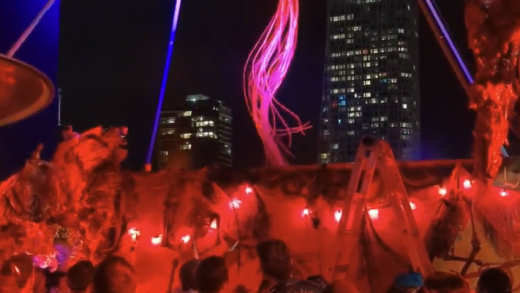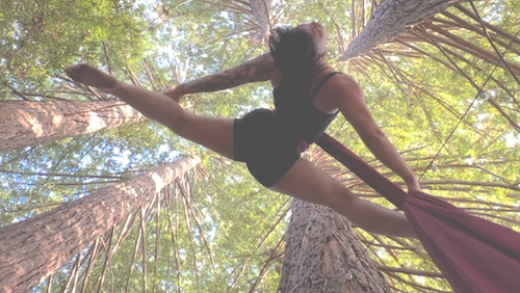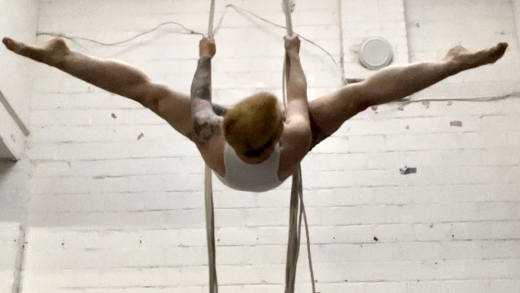disclaimer: this is not a guide on how to safely construct multicordes for yourself. this is the rationale for how i constructed mine based on my personal risk assessment.
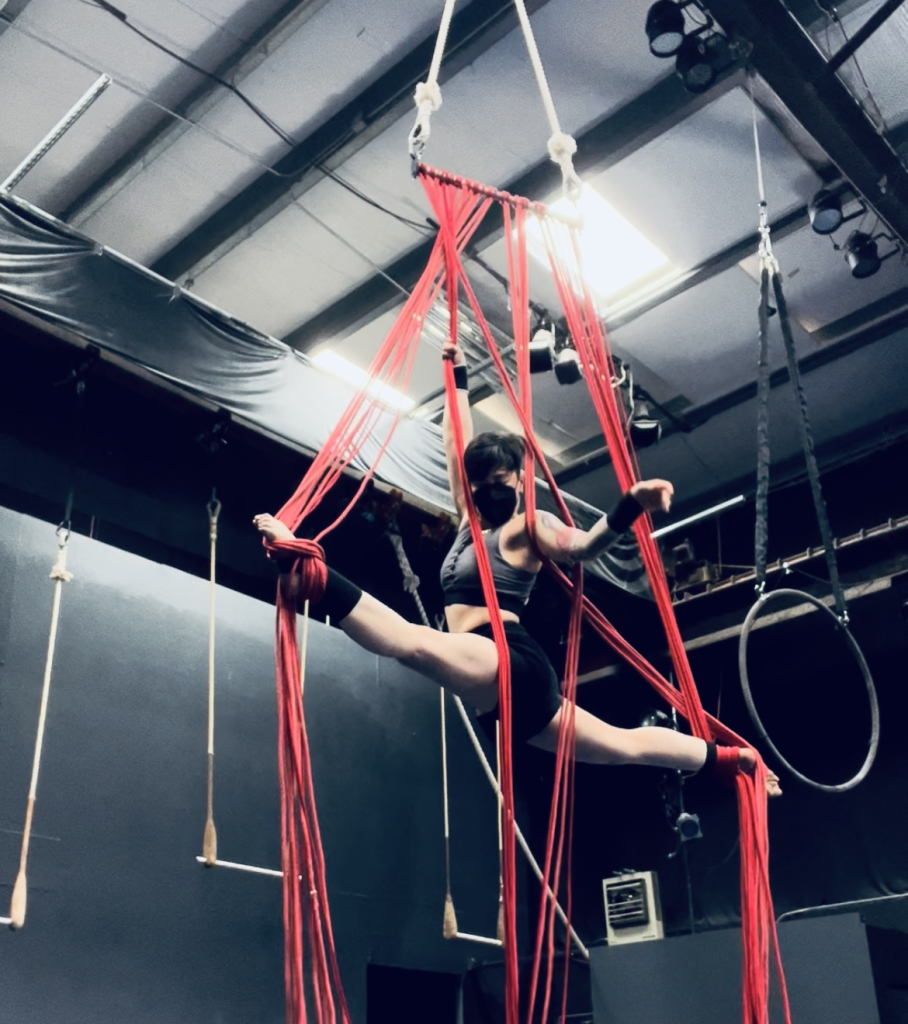
i’ve been intrigued with the chaotic aesthetic of multicordes since seeing photos of them, probably first via instagram posts from european aerialists.
construction-wise i had very little to go on when i decided to start prototyping some for myself.
i started with observing the hardware i’d seen on a few different examples: circle, rescue-8, and bar.
above-the-ropes hardware
circle
this was initially my favorite aesthetically, but all examples i could find used ropes as intermediary rigging.
i wanted a solution that could use rated aerial rigging like spansets, but wasn’t sure how i could effect that.


rescue-8
i dismissed rescue-8 because it bunched the cords together when passive, and one of the aesthetics i liked the most about multicordes was the sculptural look of it even without the performer, whereas this rigging method made the cordes hard to differentiate from silk.
bar
i liked the way bar-attached multicordes looked in charlotte de la bretèque’s act, particularly during handstands, and the sort of echoing cascading kinetic movement she could elicit by interacting with the linear array of the ropes, so i chose this for my prototype.
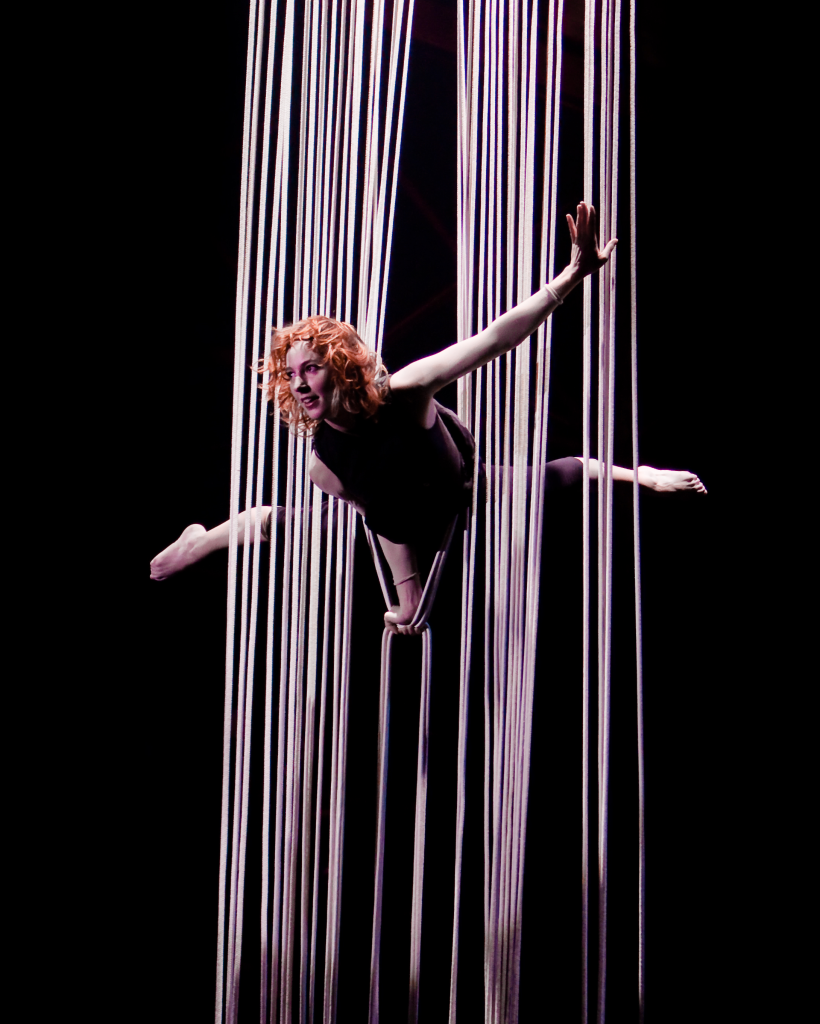
rigging the bar
i have had multiple trapezes built for myself and thought immediately of trapeze spreader bars with holes for attachment. with such a bar, i could then conceive of rigging the top as i would a double-tab lyra, such as 2 shackles and 2 spansets attached to a spreader plate, or specialized rigging.

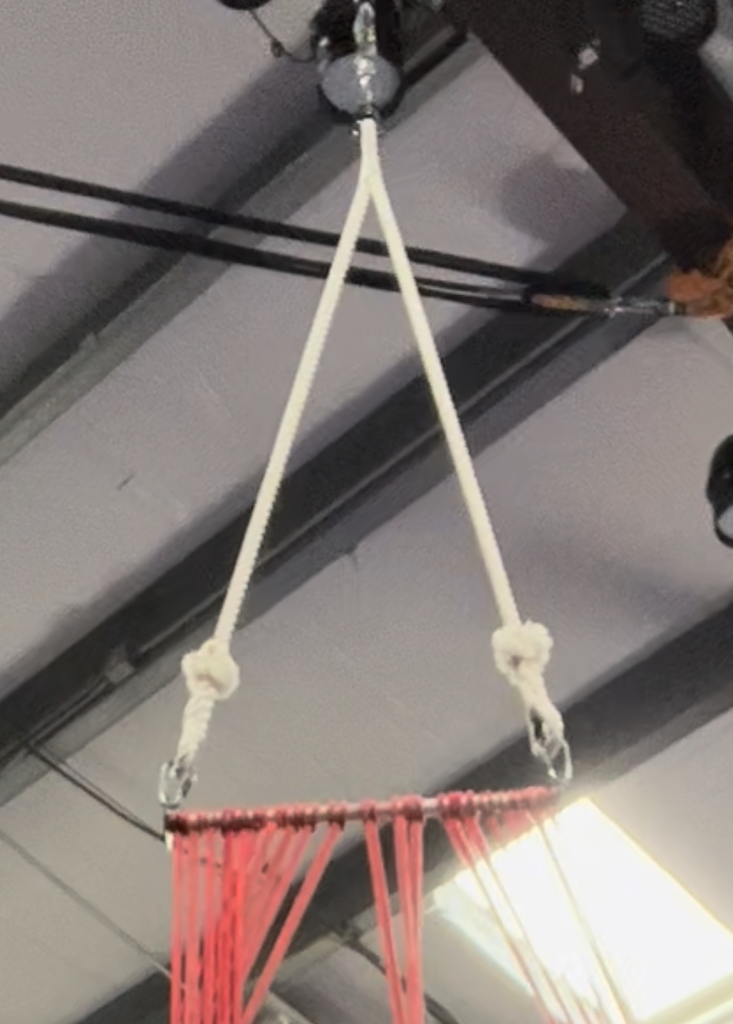

ropes for the bottom
types of rope
i researched a few rope diameters for the bottom. i looked for ropes that roughly seemed to be the same diameter based on images i had seen, and then ones that vendors at least made an effort to rate. i tried:
- [rejected] 8mm nylon shibari rope suitable for suspension. i tried this because it was easy to source and i knew it would support at least static human load.
i ended up developing my first moves using just this, but it was (1) way too slippery, (2) quite painful even despite my aerial pain tolerance (though i’m sure it could be gotten used to), and (3) too thin: it easily slipped against itself out of a gripped bunch, and difficult to manipulate a single strand with a toe grip. i think if one was attracted to this aesthetically it could eventually be worked with, though. - [selected] 3/8″ nautical rope (cotton sash cord with synthetic core) in a 600′ spool.
after a few months, i really wanted something gripper, so looked for cotton rope (so grippy!) with a core (so it wouldn’t stretch). nautical rope suppliers were the dominant result in my search.
i cut, dyed (for aesthetics), and burned (to seal ends from fraying) lengths of this myself and found the cotton to be very agreeably firm and grippy.

i have heard that some people use thicker cordes than the above (e.g. 1/2″); however i like the aesthetics of more cordes and imo there’s a tradeoff between thickness and number of cordes. i stopped with the nautical rope just because it felt quite satisfying and i had spent as much money as i wanted to developing the apparatus up to this point.
note: in all further references to cordes i’m referring to the nautical rope described above.
length
each cord’s length is about 36′, which is a number i picked based on my studio’s ceiling height.
attachment
i girth-hitched the cordes around the top of the bar.

number
i picked the number of cordes arbitrarily based on what amount i was willing to spend on rope, then spaced them out evenly.
this ended up being 16 cordes, girth-hitched, so 32 strands on a 27″ spreader bar.
i would have put in more, though there is probably an optimal maximum number for ease of cordes management, so i can’t say for sure that more would be better.
[subjective] feeling of security?
i have not attempted to quantify the rating on my prototype nor do i feel qualified to advise others upon what is “safe”.
(it should be noted that i’m more on the conservative side for aerialists… i dislike drops and tend to automatically check the condition of rigging even at professional gyms.)
i can say that subjectively, i feel quite comfortable single-arm dead-hanging for a bit on 3 cordes (6 strands).
i check the condition of the ropes every time i get on them for abrasion or hockling, especially the girth hitches at the top.
my movements on multicordes almost always have me supported by 50% of the cordes, and i feel secure given the redundancy there.
it should be noted that this is quite a heavy apparatus depending upon the length and number of your cordes, and that if it were to greatly exceed the weight of some standard apparatuses, you’d want to pay attention to your rigging’s rating.
fwiw i would welcome any comments or feedback from someone who has rating or safety opinions on multicordes, but given that i had no contacts when i was experimenting with this, i went with what risks i was willing to accept.
